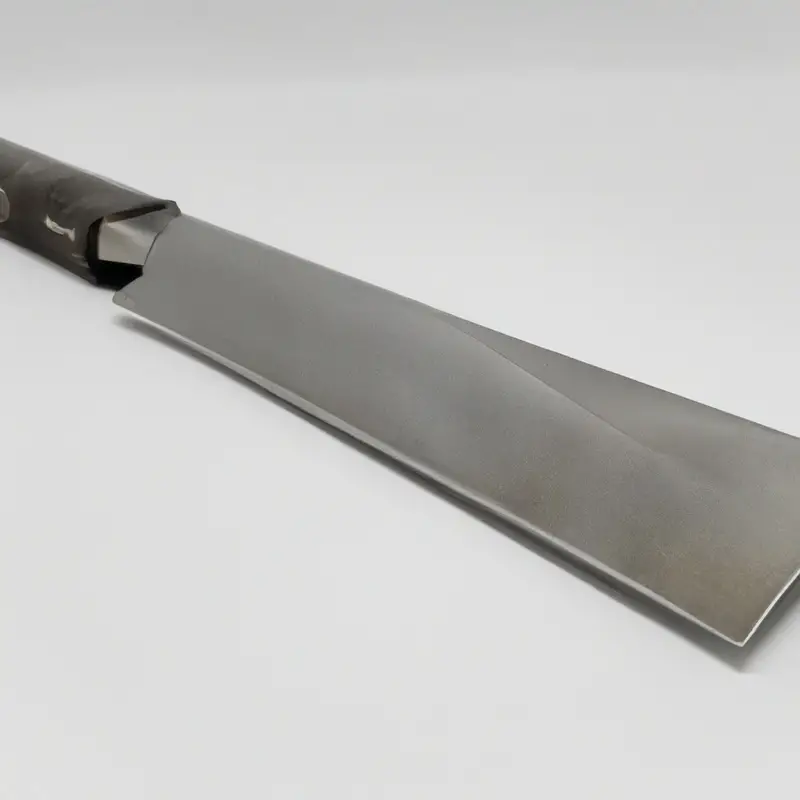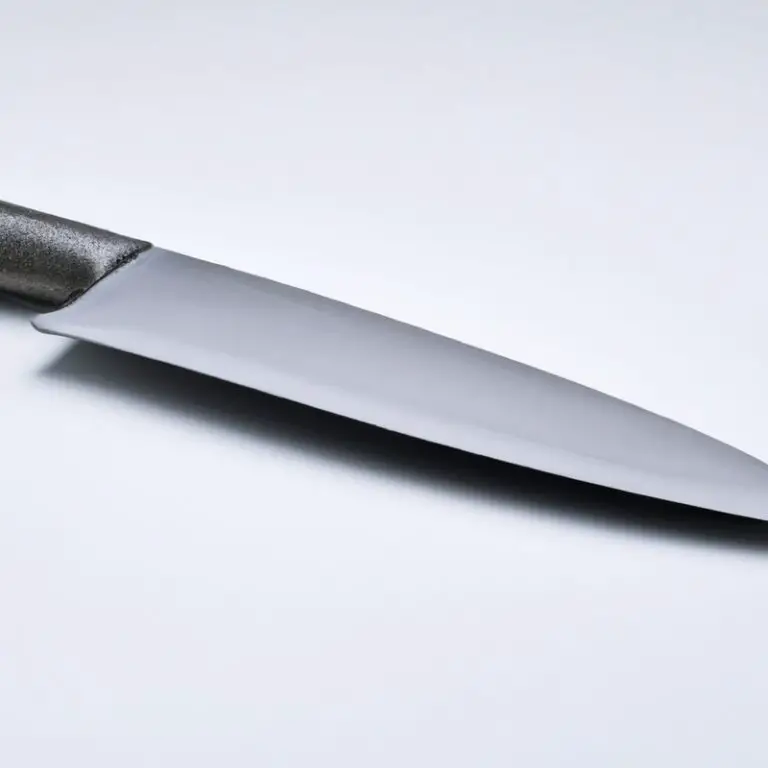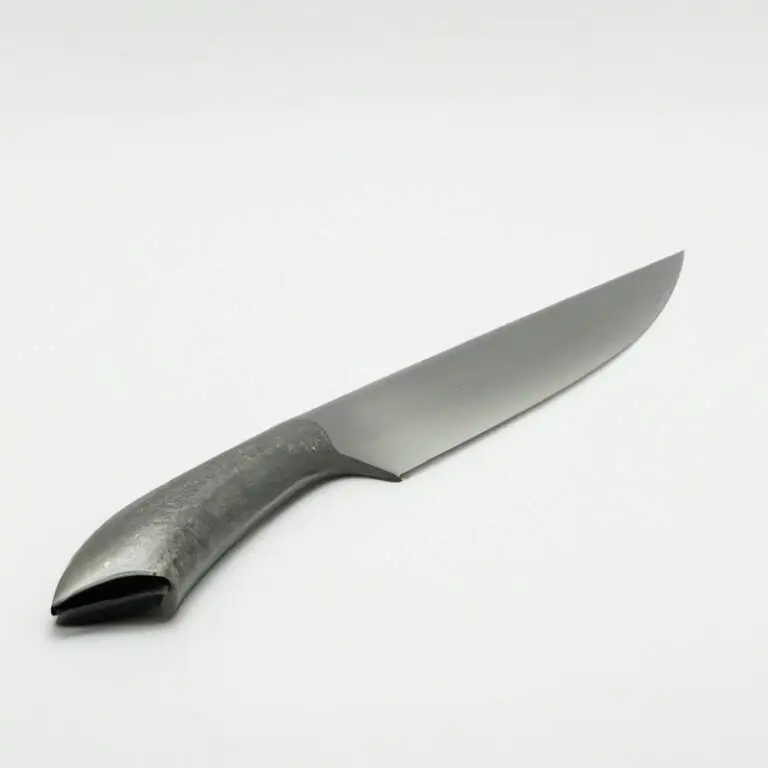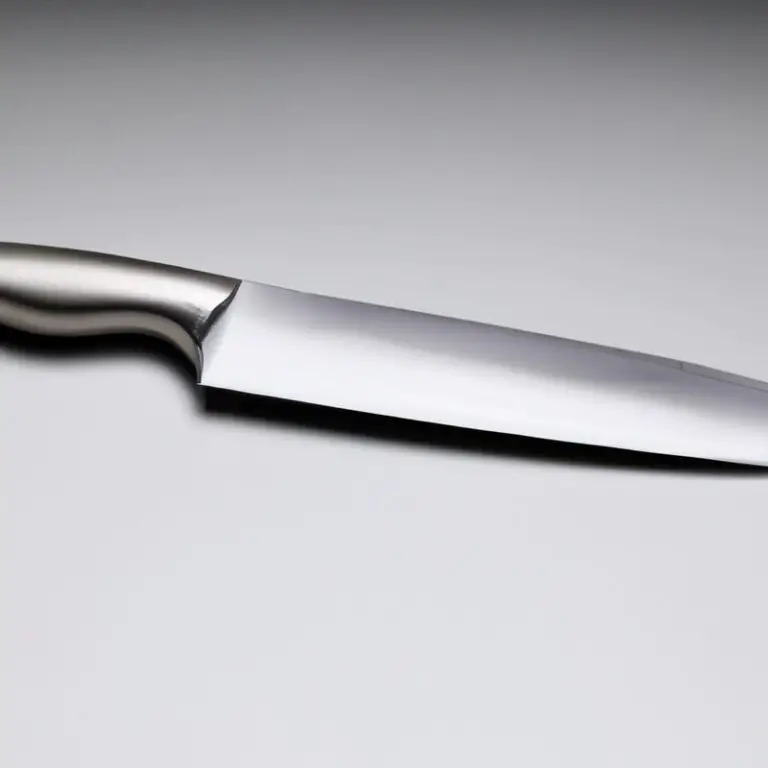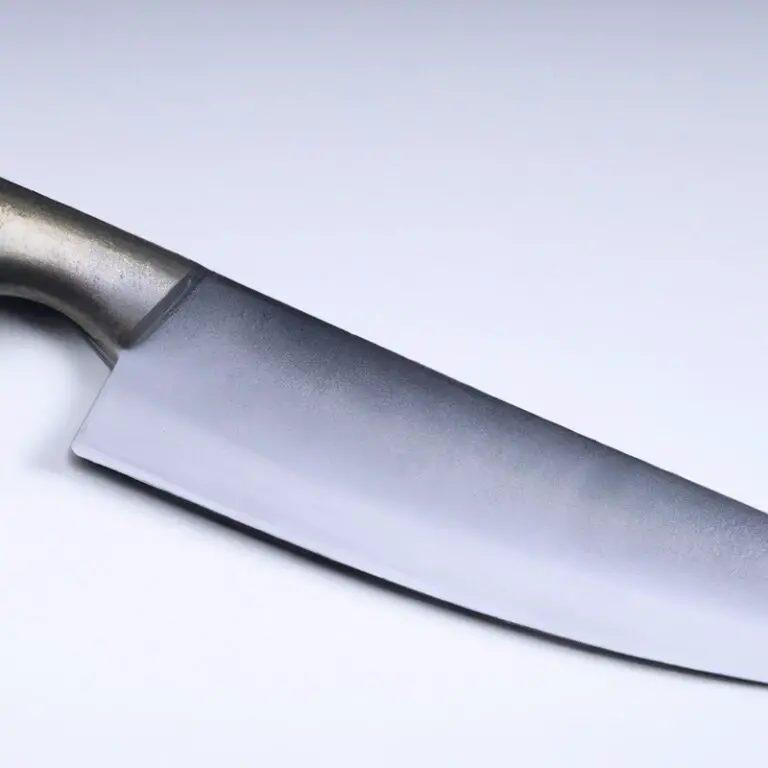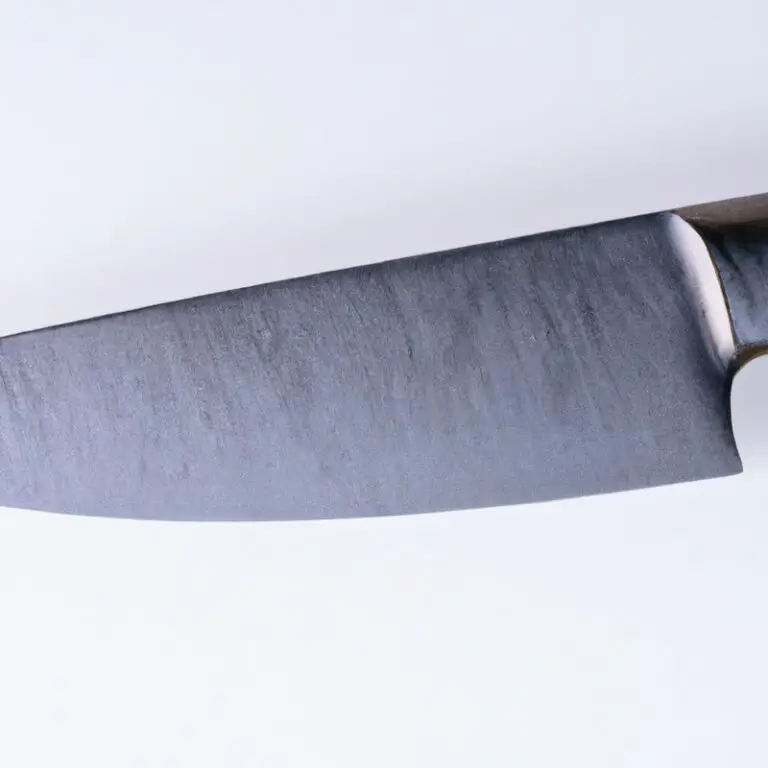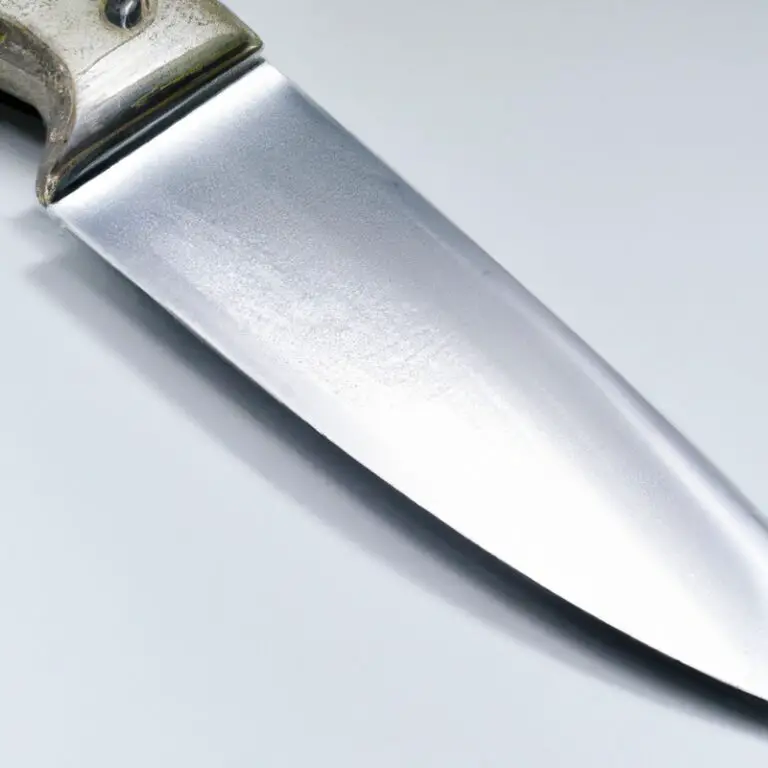How To Achieve Consistent Dicing With a Gyuto Knife? Master It!
Key Takeaways:
- Consistency in dicing with a Gyuto knife requires proper technique and practice.
- A sharp Gyuto knife is essential to achieving consistent dicing.
- Using a stable cutting board and holding the food properly can also improve dicing consistency.
- Investing in a high-quality Gyuto knife can make a significant difference in achieving consistent dicing results.
Ever wondered how professional chefs achieve uniform and consistent dices? The Gyuto knife, with its sharpness and versatility, is the secret weapon for achieving precise dicing results.
However, using a Gyuto knife for dicing requires more than just technique; it involves proper knife maintenance, hand position, and cutting surface selection.
In this article, I will guide you through the basics of dicing with a Gyuto knife, common mistakes to avoid, and provide tips on maintaining a sharp blade and achieving consistent cutting angles. With these techniques, you’ll be dicing like a pro in no time.
| Steps | Description |
|---|---|
| Step 1 | Use a sharp Gyuto knife. A dull knife will make it harder to dice consistently, and you may end up crushing or tearing the food instead of cutting it. |
| Step 2 | Choose the right cutting board. The surface should be sturdy and not too hard, or else it could damage the knife’s blade. A wooden or plastic board is ideal. |
| Step 3 | Prepare the food by washing and trimming it. Ideally, the pieces should be roughly the same size and shape to ensure consistent dicing. |
| Step 4 | Make sure you have a grip on the knife handle as well as food to avoid slips or cuts. Use your free hand to hold the food steady and guide the knife in a rocking motion. |
| Step 5 | Use the tip of the knife to create an initial incision, then use the entire blade to slice through the food in a consistent motion. Keep your fingers curled and away from the knife’s edge. |
| Step 6 | Practice regularly to improve your technique and achieve consistent dicing with a Gyuto knife. As you become more experienced, you may experiment with different cutting angles and pressures to achieve specific results. |
The basics of dicing with a Gyuto knife
To dice with a Gyuto knife, start by ensuring the food item is stable on your cutting board. Grip the Gyuto knife handle with your dominant hand and pinch the blade’s base with your non-dominant hand.
Hold the blade above the food item and begin a rocking motion with the blade.
Use the tip of the blade to make a shallow cut into the food, and then use the entire blade to make smooth, even cuts. Keep your fingers curled under and away from the blade to avoid injury.
Practice is key to mastering the art of dicing with a Gyuto knife.
The importance of knife maintenance for consistent dicing
Maintaining your Gyuto knife is crucial for consistent dicing. A well-maintained knife ensures precise and clean cuts, while a dull or damaged blade can lead to uneven and messy dicing.
Keeping the knife sharp is essential for achieving the desired result.
Regular honing and sharpening of your Gyuto knife, as well as avoiding using it on hard surfaces such as glass or ceramic, can extend its life and ensure consistent performance for years to come. Additionally, cleaning and storing the knife properly can prevent rust and corrosion, which can affect its sharpness and performance.
By taking care of your Gyuto knife, you can achieve the perfect dicing results every time.
How to choose the right cutting surface for dicing with a Gyuto knife
Choosing the right cutting surface is crucial for achieving consistent dicing with a Gyuto knife. Avoid cutting on hard surfaces like glass, granite, and steel as these can damage the blade’s edge and cause inconsistency in dicing.
Opt for soft surfaces like wood, bamboo, or plastic.
A wooden cutting board is a great choice as it’s gentle on the blade and won’t dull it quickly. Make sure to clean and sanitize the cutting board regularly to prevent contamination.
Avoid using a damp cutting board as it can cause the wood to swell and warp, affecting the blade’s contact with the surface.
A stable cutting surface also helps to prevent injuries while dicing with a Gyuto knife.
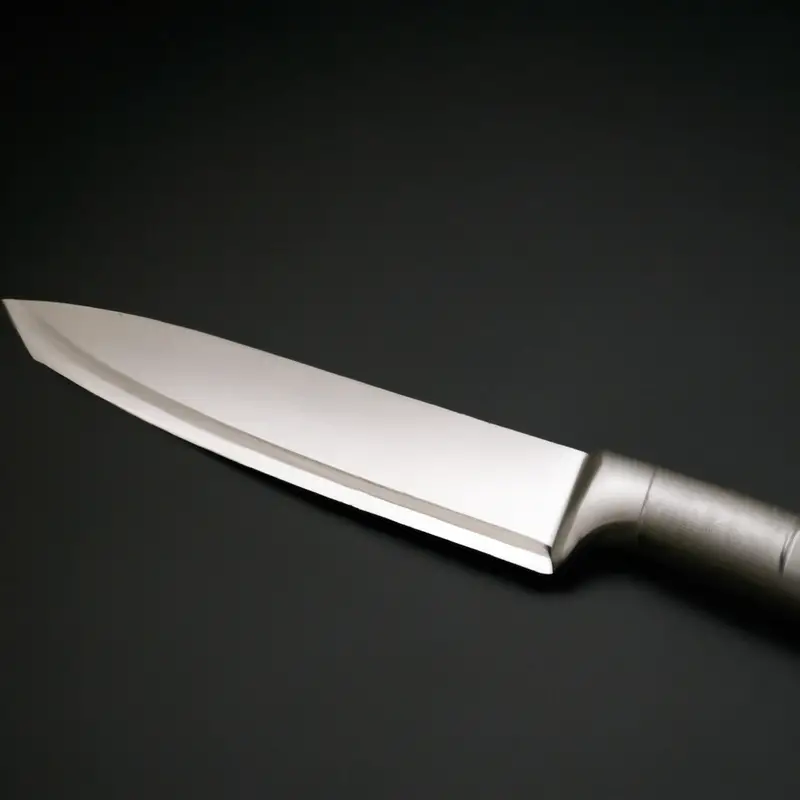
Understanding the correct hand position for optimal dicing results
Understanding the correct hand position is crucial for achieving optimal dicing results with a Gyuto knife. The ideal grip involves placing your index finger and thumb on the blade’s opposite sides at the bolster, with your remaining three fingers wrapped around the handle.
This grip provides excellent control when making precise cuts and prevents the blade from slipping.
It’s essential to hold the knife at a comfortable angle to prevent any possible injuries. Moreover, always keep your knife hand steady and use your other hand to hold the food when dicing.
By using the right hand position, you can ensure safety, consistency, and optimal dicing results every time.
Common mistakes to avoid while using a Gyuto knife for dicing
It’s important to avoid common mistakes while using a Gyuto knife to achieve consistent dicing results. Here are some common mistakes to avoid:
- Using a dull knife: A dull knife can cause uneven cuts and make it harder to dice food. Make sure to sharpen your knife regularly.
- Using the wrong cutting surface: Avoid using hard surfaces like glass or granite. Instead, use a wooden or plastic cutting board to prevent dulling your knife and bacteria buildup.
- Incorrect hand positioning: Incorrect hand positioning can lead to uneven cuts or injuries. Make sure to grip the handle with your entire hand, keeping your thumb and index finger tucked behind the blade.
- Applying too much pressure: Pressing too hard can cause your knife to slip and result in uneven cuts or injury. Let the weight of the blade do the work and guide it through the food with a smooth rocking motion.
By avoiding these common mistakes, you can ensure consistent and precise dicing with your Gyuto knife.
Tips for maintaining a consistent cutting angle with a Gyuto knife
To maintain a consistent cutting angle with a Gyuto knife, here are some tips to follow:
- Hold the knife at a 15-degree angle to the cutting board.
- Keep the blade flat against the food for a clean and precise cut.
- Use a honing rod to touch up the blade’s edge before each use.
- Avoid applying excessive pressure on the blade while cutting.
- Maintain a steady and rhythmic motion for consistent dicing results.
- Use a cutting board made of softer materials to prevent the knife from dulling quickly.
- Avoid cutting through hard bones or frozen food to prevent damage to the knife’s edge.
By following these tips, you will be able to maintain a consistent cutting angle with your Gyuto knife and achieve perfect dicing results every time.
The impact of blade thickness on dicing consistency and how to choose the right thickness
The blade thickness of a Gyuto knife plays a crucial role in dicing consistency. A thinner blade produces cleaner cuts and allows for more precision when dicing.
However, it also requires more skill and technique to use.
A thicker blade, on the other hand, is more forgiving and suitable for beginners. It is also more durable and can handle tougher ingredients better.
When choosing the right blade thickness for dicing, consider your level of experience, the type of food you will be cutting, and your desired level of precision.
Beginners may benefit from a blade thickness of 2.0 – 2.5mm, while more experienced users may prefer a thinner blade between 1.5 – 2.0mm. Ultimately, the right blade thickness for you will depend on personal preference and intended use.
Practice and experimentation will help you determine the best blade thickness for your dicing needs.
How to use a honing rod to maintain a sharp Gyuto knife for perfect dicing
Maintaining a sharp edge on a Gyuto knife is crucial for achieving consistent dicing results. A honing rod is an excellent tool for maintaining a sharp edge on your knife in between sharpening sessions.
To use a honing rod, start by holding the rod vertically on a cutting board with the tip touching the board.
Hold the knife at a 20-degree angle and place the heel of the blade against the top of the honing rod. Maintain that angle as you gently draw the blade down the length of the honing rod while applying light pressure.
Repeat the process on the other side of the blade and alternate sides until the edge is straight and sharp.
Always remember to wipe the blade after honing to remove any metal dust. Consistently honing your Gyuto knife will help keep it sharp and ensure perfect dicing results every time.
The benefits of using a sharpening stone for dicing with a Gyuto knife
Using a sharpening stone for dicing with a Gyuto knife offers several benefits. Sharpening stones allow for frequent maintenance, ensuring your knife stays sharp and ready for consistent dicing.
Unlike honing rods, sharpening stones remove a small amount of metal from the blade, creating a sharper edge.
This sharp edge greatly improves the knife’s performance and makes dicing smoother and easier. Additionally, using a sharpening stone ensures that the blade remains even and balanced, reducing the risk of accidental cuts or injury.
Finally, sharpening stones come in various grits, allowing for customization of the blade’s sharpness depending on the food being diced.
Overall, a sharpening stone is an essential tool for any cook looking to maintain consistent results while dicing with a Gyuto knife.
How to dice different types of food with a Gyuto knife and achieve consistent results
To dice different types of food with a Gyuto knife and achieve consistent results, it is important to choose a cutting technique that compliments the texture and shape of the food. For example, for hard vegetables such as carrots, it is recommended to chop off the top to create a flat surface before slicing lengthwise.
This will create even slices.
Similarly, for soft foods like tomatoes, it is recommended to use a sawing motion rather than just smashing them down with the knife blade, which is the common mistake beginners do. Additionally, it is important to consider the size of the food and adjust the knife size accordingly.
For larger foods, like cabbage or watermelon, it is best to use a larger knife that spans the entire length of the food.
On the other hand, for small, delicate foods like strawberries, a smaller gyuto knife is preferable. Finally, to ensure consistent results, it is recommended to maintain a steady hand and use the full length of the blade while cutting.
This ensures that the cuts are smooth and clean, resulting in consistent dicing.
By considering the texture, size, and shape of the food, and by maintaining a steady hand and using the full length of the blade, anyone can master the art of dicing with a Gyuto knife and achieve consistent results.
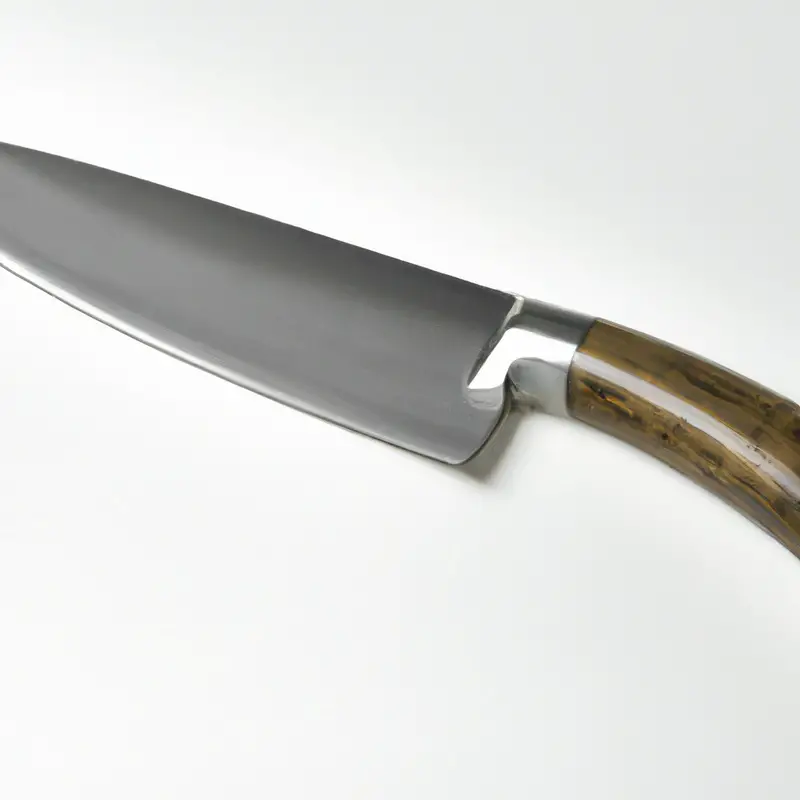
Final Verdict
Achieving consistent dicing results with a Gyuto knife requires knowledge, practice, and proper maintenance. By understanding the correct hand position, cutting angle, and blade thickness, along with using the right cutting surface and honing and sharpening tools, you can dice any type of food with ease and precision.
Avoiding common mistakes and choosing the right thickness will also help you achieve perfect dicing results every time.
With these essential tips and techniques, dicing with a Gyuto knife can be a satisfying and enjoyable experience. Remember, a well-maintained Gyuto knife is an indispensable tool in any kitchen.
So, hone your skills and enjoy the art of perfect dicing!

